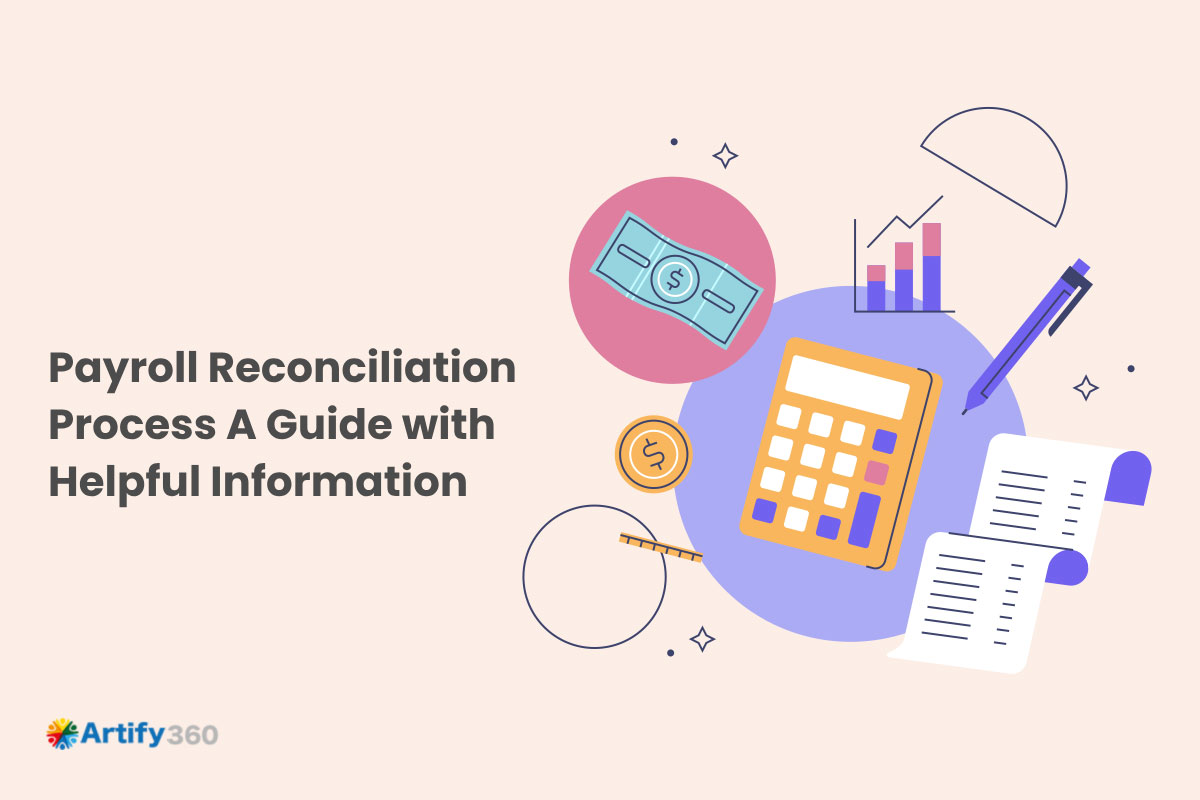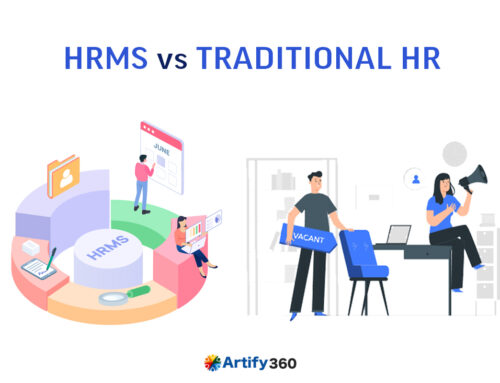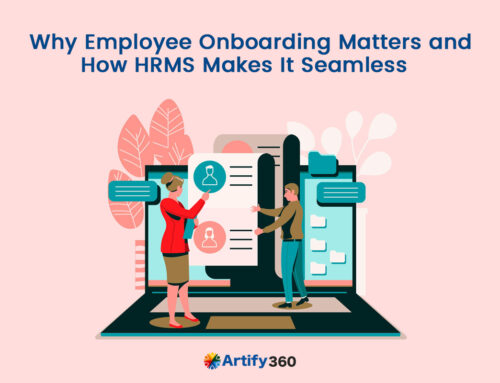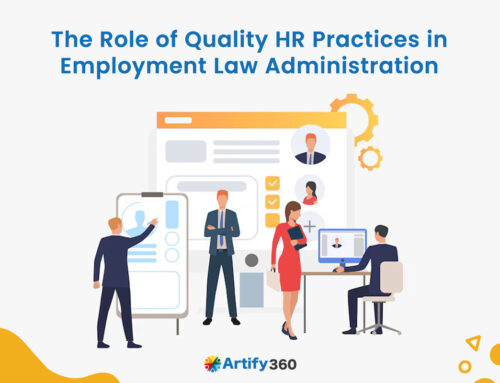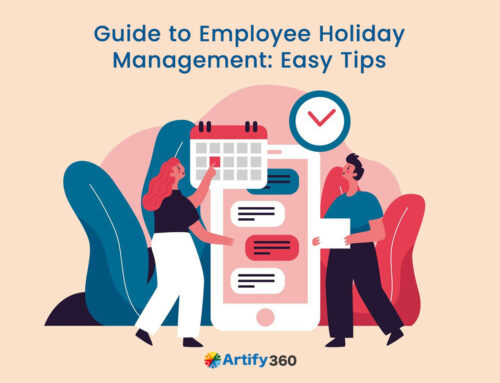Payroll plays a critical role in an organization’s HR operations domain. Implementing effective payroll management in your business helps you grow. Payroll management is an active component of employee engagement in companies. One of the important aspects of payroll management in businesses is the payroll reconciliation process.
This post is an important take on the concept of payroll reconciliation in companies. The article covers core strategies to learn and explore the HR management process. You can understand the various techniques of digital payroll platforms in fulfilling the reconciliation process. Hop in to get more ideas on this specific aspect of payroll processing and management.
What is the Payroll Reconciliation Process?
Without further ado, let’s take a look at the definition of payroll reconciliation. The concept denotes the process of verifying data and information related to the payroll processing of your human resources. It shows information about the various company records that help you crosscheck the financial reports related to payroll.
Payroll reconciliation is relevant for each HR activity concerning the salary distribution of your employees. It includes wages and compensation along with the benefits administration model.
The greatest purpose of a payroll reconciliation model is to identify errors or discrepancies in the calculation of compensation. It plays a vital role in the review of business operations related to the processing of payments and payroll process management in the company.
Payroll reconciliation is primarily for the finance and accounting teams. However, it plays a direct part in boosting the HR section of the company. The process aids in employee compensation distribution. The elements of accuracy and precision are important in the reconciliation model.
Also Read: Top 10 Challenges in HR Payroll Management in 2025 & Solutions
Understanding the Importance of Payroll Reconciliation
Before learning about the payroll reconciliation steps and automation processes, discover the importance of the innovative concept. The primary relevance lies with the satisfaction of your business objectives. Core payroll management should be available in the company to promote the reconciliation model.
Reconciliation ensures proper documentation of HR payroll functions in your company. The business can gain significantly by promoting an exclusive HR operations platform with a suitable payroll database.
Plus, you might be vulnerable to the occurrence of different payroll errors in an operations domain or HR context. However, the best thing is to go for an engaging payroll reconciliation model with optimum results and consistent performance.
The process helps you uncover details related to the payroll structure in companies. It owes to the fact that payroll reconciliation happens at regular intervals with necessary upgrades. You can avoid conflict with compliance authorities by having proper payroll management in place.
Apart from the alliance with regulatory bodies, you can fulfill various taxation requirements by using a reconciliation platform. It supports you in maintaining integrity and transparency in companies. Reports suggest that nearly 50% of your employees may leave the business if payroll contribution fails consecutively.
Your investors will have a better business understanding by using payroll reconciliation techniques. The process also delivers support to the stakeholders and external financial managers working with your organization.
How Can You Carry Out Payroll Reconciliation in Your Business?
You cannot overstate the importance of conducting payroll reconciliation in an organization. If you want to grow your business with optimum payroll management solutions, an encouraging reconciliation service will work.
The steps showing how to reconcile payroll in your business are listed below:
Planning the process
The initial step in managing your payroll reconciliation process is to introduce a working plan. Plan the entire reconciliation process until the final checks and upgrades. Preparation helps you tackle challenges along the way easily.
Collection of records
Under the practical measures, the first step is to create a portal that works with the payroll records. It means the collection of source records and documents that show the payroll-related metrics of an employee. Regular reconciliation models will desire this collection feature. It will enable you to perform excellently well in the HR management domain.
Verification of records
The next step is to create a trusted model where all the records undergo active verification. It helps you develop a sense of fulfillment regarding all your HR payroll operations. You can integrate employee self-service activities into this particular platform.
Confirmation of reports
Payroll reports should be tracked, recorded, and reported with the corresponding channels for proper analysis. You can contribute to the report generation with the help of an integrated payroll management system.
Calculation of salary
Accurate reporting, processing, and calculation of your employees’ salaries are necessary to boost the monthly payroll reconciliation process. Arrive at the optimum salary estimates that match the employee wages.
Factors related to the annual reconciliation model play an important role in the management of this particular HR feature. You can go for a dynamic and vibrant HR process with this particular platform.
Calculation of deductions
The proper calculation of various deductions to an employee’s compensation is important to understand the payroll reconciliation workflow. These deductions include taxes, welfare funds, staff withdrawals, etc.
You may also add different interest schemes and staff benefits under this calculation. Payroll deductions offer a unique perspective to understand and implement the operations processing stages of the payroll management domain. It could prove to be feasible under the long-term HR management process.
Deciding the pay rates
The next step in the process is to get an estimate of the final pay rate that you owe to your employees. It could already be under any fixed terms or could be a variable pay scale, depending on your business. Either way, decide the final amount of payroll that you have to provide to your employees.
Cross-checking the statement
This step imbibes the best route for implementing payroll reconciliation in your company. You can crosscheck the payroll records of employees with the final statements following bank and company policies. Reconciliation is complete if all the financial statements regarding the same payroll record match perfectly.
Final review and adjustments
The review of payroll records usually happens in a company. You have to check and receive feedback regarding the payroll delivery with support from automated processes. In this step, you can make the needed adjustments and corrections without fail.
Report and document the process
As a final top-notch step, you have to document the entire payroll reconciliation process. Proper reports should be in place for future use and reference. This measure helps you determine the need for any upgrades to the reconciliation model. It also shows the need for executing customizable features in the platform.
Payroll Reconciliation & HR Software – An Integral Relationship
Now you know all about the implementation steps of a payroll reconciliation process. The next step is to understand the importance of dedicated HR software to execute this concept. The relationship between HRMS and payroll reconciliation is direct.
If you have a one-stop solution for delivering HR operations, it works in this context. An exclusive payroll management solution will be available in this portal. You may also integrate a payroll module feasibly. Either way, payroll reconciliation is part of the payroll management software.
Payroll transactions play a significant role in the management of general HR operations niche. If you can promote the solutions in this category in an essential mode, it is feasible for you to produce significant results with optimum objectives.
If you are using software for your digital transformation goals, it is easier to integrate a payroll reconciliation system. An end-to-end solution is possible in this structure that works efficiently for your entire HR payroll services.
Benefits of Payroll Reconciliation in Companies
When you demonstrate the workflow of HR operations using different factors, it can shed light and create focus from various angles. If you are using the payroll period factor, it is easy to manage and develop the value proposition for the core HR tasks.
The benefits of employing payroll reconciliation in your organization are numerous. Some of the top advantages of utilizing a digitized payroll reconciliation version in companies are listed below:
Smoother payroll process – Your entire payroll process becomes simpler to implement with the support of effective reconciliation techniques. All transactions related to payroll expense management will have proper recording and tracking options.
Accuracy and precision – Payroll reconciliation is as precise as it gets in an HR model. The accuracy of this process helps you grow in the holistic business productivity functions and features.
Employee engagement – HR efficiency improvement is possible in companies adopting payroll reconciliation. It adds a door to include employee engagement activities to boost their experience and satisfaction.
Also Read: Employee Engagement Activities for A Happy and Successful Team
Proper documentation – An effective task in any HR model is to involve suitable documentation of the various platform activities. The reconciliation process helps you report all payroll data in one place.
Efficient recording of compliance – You can actively analyze payroll-related compliance norms using reconciliation. It assists you to stay on top of regulatory measures in the payroll niche. Failure may cause you problems as more than 50% of businesses undergo penalization due to non-compliance errors.
Saves cost – An appropriate payroll reconciliation model helps you save costs. It works as part of your budgetary control in HR operations. You can record deductions feasibly with this particular HR management model and its unique benefit.
Saves time – Time efficiency is also an important task to deal with as part of your company’s work. Payroll reconciliation helps you work on repetitive HR tasks that demand specific employee hours. These are uniquely part of general payroll concerns.
Easier payroll calculation – The ease of calculating the payroll of your resources comes with a reconciliation process. It should happen at regular intervals to get the best results.
Data security & privacy – All payroll data in a business model should be secure. You can guarantee your employee’s privacy with the support of effective data management under reconciliation techniques.
Access to authorized reports – The HR payroll process involves a set of authorized reports in the business. You can access these focused reports with the reconciliation platform in the operations model.
Sets alerts for payroll portals – Your entire HR payroll feature works better with an ideal notification management system. Reconciliation reports help you provide insights into the staff resources using timely processing and alerts.
Negligible errors – The errors in a digitized HR process should be minimal or zero. Payroll reconciliation reduces the errors attached to the manual calculation of staff compensation and benefits.
Well-defined salary distribution – Reconciliation helps you define a disciplined salary distribution for your employees. It can support the value of adding wage structures to determine the financial standing of your salaried employees. This feature is uniquely crucial for building the essential compensation management of your resources.
How to Include Artify 360 HR Software in Your Payroll Reconciliation Process?
You now have a clear understanding of the entire payroll reconciliation process. It is time to reconcile payroll in your business with the support of the HRMS platform. The optimum option to complete this feature is to adopt an end-to-end payroll management solution.
A definitive product to help your payroll reconciliation objectives is the Artify 360 HR software system. Artify promotes specialized modules that you can integrate with the payroll processing module to ensure reconciliation.
Recurring payroll activities are possible in our cloud HR software platform. We offer a model that executes essential support to your HR business goals.
Individual employee payroll activities are essentially part of this HR payroll software. For more information on how we can help you embrace payroll reconciliation, reach out to our operations team. You can also get a free demo regarding payroll processing and integrations.

